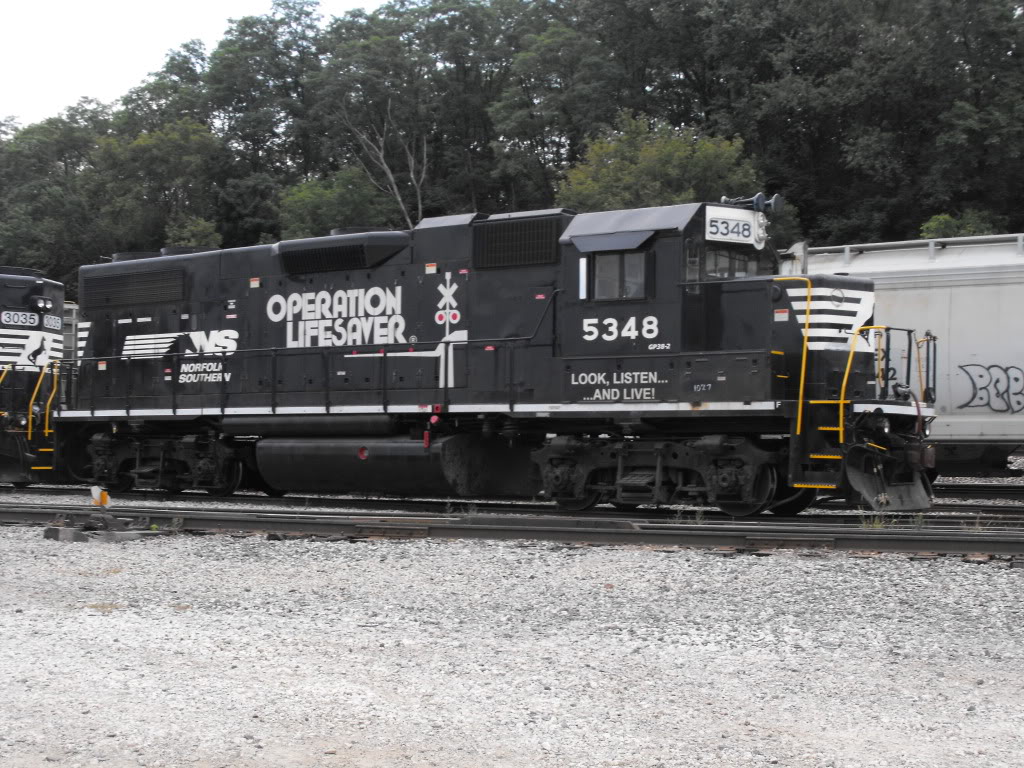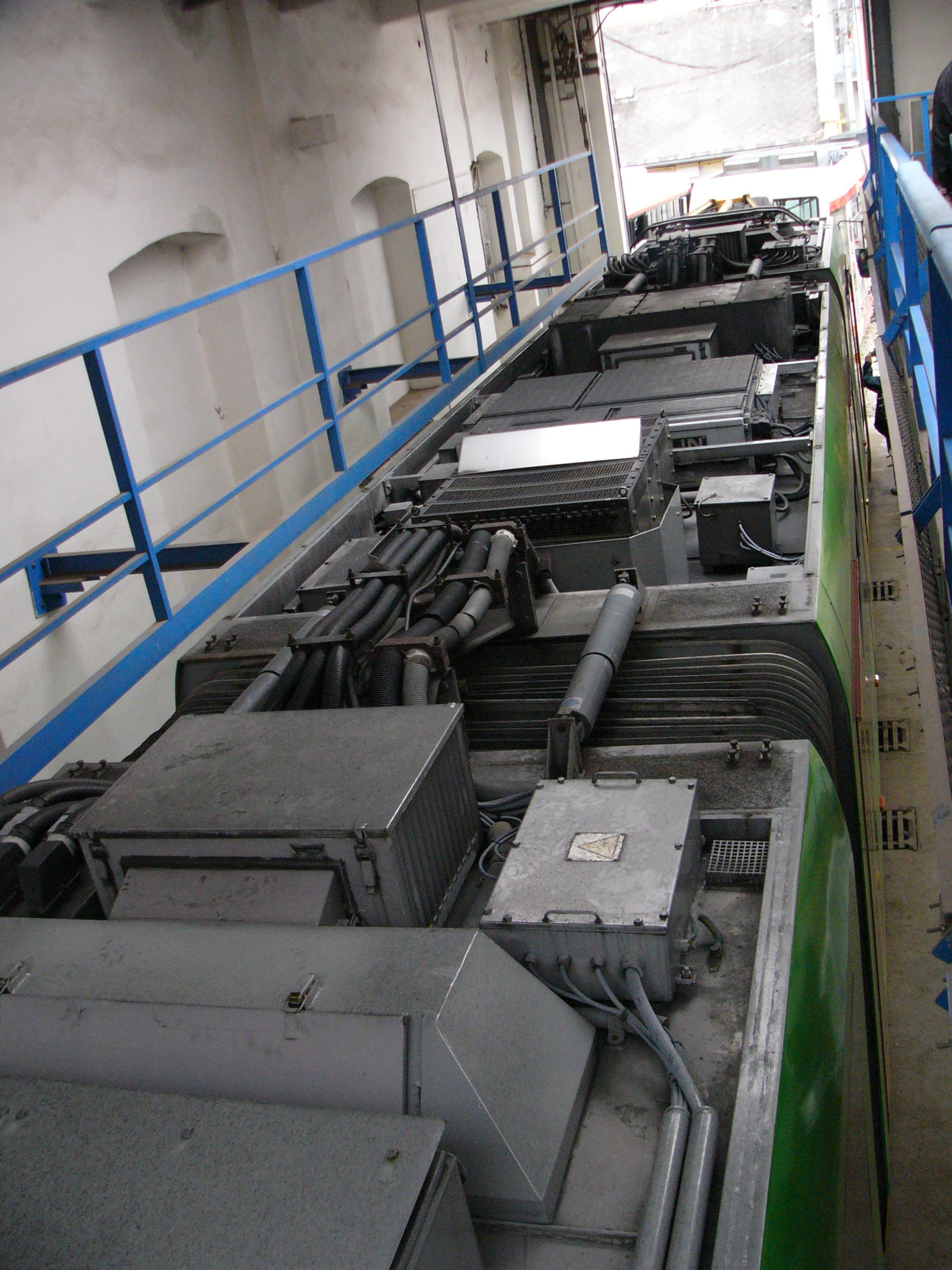|
LRTA 13000 Class
The LRTA 13000 class is a class of fourth-generation high-floor light rail vehicles (LRV) of the Light Rail Transit Authority servicing the LRT Line 1 (Metro Manila), LRT Line 1, manufactured by Construcciones y Auxiliar de Ferrocarriles, CAF. Purchased in 2017 with Japanese funding as part of the Cavite extension of the line, the trains entered service in July 2023 to replace the aging first-generation LRTA 1000 class, 1000 class trains. It is the first LRV in the system with 5 digits in the body number due to the class fleet exceeding 99 units, in comparison to the older fleet. Operational history Purchase In 2013, feasibility studies were conducted by the Japan International Cooperation Agency (JICA) for a southward extension of the LRT Line 1 (Metro Manila), LRT Line 1 to Cavite. It determined that once the extension was completed, sixty-one trains would be required for operation, but thirty-one of those are existing ones. Therefore, JICA proposed the purchase of thirty ne ... [...More Info...] [...Related Items...] OR: [Wikipedia] [Google] [Baidu] |
Central Terminal (LRT)
Central Terminal, formerly and widely known as Arroceros station, is an elevated Light Rail Transit (LRT) station located on the LRT Line 1 (LRT-1) system in Ermita, Manila. A popular name for the station is Arroceros due to its proximity to the Arroceros Forest Park; Arroceros is also the former name of Antonio Villegas Street, where the station is located. Central Terminal is the last station of LRT-1 south of the Pasig River and serves as the fourteenth station for trains headed to Fernando Poe Jr. and the twelfth station for trains headed to Dr. Santos. The station was named as such due to its initial central location in the line, having been the tenth station for trains headed to both Monumento and Baclaran. Opened on December 1, 1984, as part of the line's initial section known as Taft Line (after Taft Avenue, where most of the section's stations are located), it was the line's initial northern terminus, known as Arroceros, until Carriedo was opened on April 14, 1985 ... [...More Info...] [...Related Items...] OR: [Wikipedia] [Google] [Baidu] |
Light Rail Transit Authority
The Light Rail Transit Authority (LRTA) is a public transport operator that is responsible for the construction, operation, maintenance and/or lease of Manila Light Rail Transit System in the Philippines. It is organized as a government-owned and controlled corporation under the Department of Transportation (DOTr) as an attached agency. History The results of a fourteen-month study conducted between 1976 and 1977 by Freeman Fox and Associates suggested a street-level light rail line in Manila. These proposals were revised by the Ministry of Transportation and Communications, later the Department of Transportation (DOTr), to an elevated system in order to avoid building in the city's many intersections. On July 12, 1980, President Ferdinand Edralin Marcos created the Light Rail Transit Authority through Executive Order No. 603, and assigned First Lady and Governor of Metro Manila Imelda Marcos as its chairman. While the LRTA confined its roles to policy making, fare regu ... [...More Info...] [...Related Items...] OR: [Wikipedia] [Google] [Baidu] |
Light Rail Vehicle
Light rail (or light rail transit, abbreviated to LRT) is a form of passenger urban rail transit that uses rolling stock derived from tram technology National Conference of the Transportation Research Board while also having some features from heavy rapid transit. The term was coined in 1972 in the United States as an English equivalent for the German word '' Stadtbahn'', meaning "city railway". From: 9th National Light Rail Transit Conference Different definitions exist in some countries, but in the United States, light rail operates primarily along exclusive rights-of-way and uses either individual tramcars or multiple units coupled together, with a lower capacity and speed than a long heavy rail passenger train or rapid transit system. Narrowly defined, light rail transit uses rolling stock that is similar to that of a traditional tram, while operating at a higher capacity and speed, often on an exclusive right-of-way. In broader usage, light rail transit can include tram- ... [...More Info...] [...Related Items...] OR: [Wikipedia] [Google] [Baidu] |
Automatic Train Protection
Automatic train protection (ATP) is the generic term for train protection systems that continually check that the speed of a train is compatible with the permitted speed allowed by signalling, including automatic stop at certain signal aspects. If it is not, ATP activates an Emergency brake (train), emergency brake to stop the train. See also * Advanced Civil Speed Enforcement System * Anti Collision Device * Automatic Warning System * Automatische treinbeïnvloeding (ATB) * Automatic Train Protection (United Kingdom), British Rail's ATP system * Continuous Automatic Warning System (CAWS) * EBICAB * European Train Control System (ETCS) * Kavach_-_Indian_Railways, Kavach * Positive Train Control (PTC) * Punktförmige Zugbeeinflussung (PZB) * Train Protection & Warning System * Train Warning System (India), Train Warning System * Transmission Voie-Machine (TVM) References {{rail-transport-stub Train protection systems ... [...More Info...] [...Related Items...] OR: [Wikipedia] [Google] [Baidu] |
Alstom
Alstom SA () is a French multinational rolling stock manufacturer which operates worldwide in rail transport markets. It is active in the fields of passenger transportation, signaling, and locomotives, producing high-speed, suburban, regional and urban trains along with trams. The company and its name (originally spelled Alsthom) was formed by a merger between the electric engineering division of Société Alsacienne de Constructions Mécaniques (Als) and Compagnie Française Thomson-Houston (thom) in 1928. Significant acquisitions later included the Constructions Électriques de France (1932), shipbuilder Chantiers de l'Atlantique (1976), and parts of ACEC (late 1980s). A merger with parts of the British General Electric Company formed GEC Alsthom in 1989. Throughout the 1990s, the company expanded its holdings in the rail sector, acquiring German rolling stock manufacturer Linke-Hofmann-Busch and Italian rail signaling specialist Sasib Railways. In 1998, GEC Alsthom was ... [...More Info...] [...Related Items...] OR: [Wikipedia] [Google] [Baidu] |
Electronically Controlled Pneumatic Brakes
Electronically controlled pneumatic brakes are a type of railway braking systems. Overview Traditional train braking systems use pneumatic valves to control and generate brake applications on the cars along the length of the train. In general, this conventional system consists of a brake pipe that runs the length of the train which supplies air to reservoirs mounted on each of the cars. When the brake pipe and car components are charged with air, the brakes release. When the engineer needs to make a brake application, control valves in the locomotive reduce the brake pipe pressure. As the brake pipe pressure is reduced, the service portions on each car divert air from their reservoirs to their brake cylinders. To release the brakes, the engineer charges the brake pipe. This method of controlling the brakes on freight and passenger cars has remained virtually unchanged since its invention by George Westinghouse in 1868. The conventional braking system suffers from many weakness ... [...More Info...] [...Related Items...] OR: [Wikipedia] [Google] [Baidu] |
Rheostatic Braking
Dynamic braking is the use of an electric traction motor as a generator when slowing a vehicle such as an electric or diesel-electric locomotive. It is termed " rheostatic" if the generated electrical power is dissipated as heat in brake grid resistors, and " regenerative" if the power is returned to the supply line. Dynamic braking reduces wear on friction-based braking components, and regeneration lowers net energy consumption. Dynamic braking may also be used on railcars with multiple units, light rail vehicles, electric trams, trolleybuses, and electric and hybrid electric automobiles. Principle of operation Converting electrical energy to the mechanical energy of a rotating shaft (electric motor) is the inverse of converting the mechanical energy of a rotating shaft to electrical energy (electric generator). Both are accomplished through the interactions of armature windings with a (relatively) moving external magnetic field, with the armature connected to an electrical c ... [...More Info...] [...Related Items...] OR: [Wikipedia] [Google] [Baidu] |
Regenerative Brake
Regenerative braking is an energy recovery mechanism that slows down a moving vehicle or object by converting its kinetic energy or potential energy into a form that can be either used immediately or stored until needed. Typically, regenerative brakes work by driving an electric motor in reverse to recapture energy that would otherwise be lost as heat during braking, effectively turning the traction motor into a generator. Feeding power backwards through the system like this allows the energy harvested from deceleration to resupply an energy storage solution such as a battery or a capacitor. Once stored, this power can then be later used to aid forward propulsion. Because of the electrified vehicle architecture required for such a braking system, automotive regenerative brakes are most commonly found on hybrid and electric vehicles. This method contrasts with conventional braking systems, where excess kinetic energy is converted to unwanted and wasted heat due to friction ... [...More Info...] [...Related Items...] OR: [Wikipedia] [Google] [Baidu] |
Pantograph (transport)
A pantograph (or "pan" or "panto") is an apparatus mounted on the roof of an electric train, tram or trolley buses to collect power through contact with an overhead line. The term stems from the resemblance of some styles to the mechanical pantographs used for copying handwriting and drawings. The pantograph is a common type of current collector; typically, a single or double wire is used, with the return current running through the Rail profile, rails. Other types of current collectors include the bow collector and the trolley pole. Invention The pantograph, with a low-friction, replaceable graphite contact strip or "current collector, shoe" to minimise lateral stress on the contact wire, first appeared in the late 19th century. Early versions include the bow collector, invented in 1889 by Walter Reichel, chief engineer at Siemens & Halske in Germany, and a flat slide-pantograph first used in 1895 by the Baltimore and Ohio Railroad. The familiar diamond-shaped roller ... [...More Info...] [...Related Items...] OR: [Wikipedia] [Google] [Baidu] |
Schunk Group
The Schunk Group is a company headquartered in Germany. The most important fields of endeavor are carbon technology and ceramics, environmental simulation and climate technology, sintered metals as well as ultrasonic welding. The Schunk Group has a presence in 29 countries with more than 60 operative companies. Consolidated sales came to EUR 1,450 million in 2022 and the number of employees is more than 9,000. The Schunk Group comprises four divisions and a total of 10 business units. Historical The company was founded by Ludwig Schunk and Karl Ebe in 1913 in Fulda to produce carbon brushes. In 1918 the company moved to Heuchelheim near Giessen. The childless founder Ludwig Schunk (1884–1947) bequeathed the company's entire assets to the Providential Fund for Company Members. That fund was meant to provide voluntary financial support to employees and former employees or their relatives in case of neediness, invalidity or old age. Today, the registered association Ludw ... [...More Info...] [...Related Items...] OR: [Wikipedia] [Google] [Baidu] |
Overhead Catenary
An overhead line or overhead wire is an electrical cable that is used to transmit electrical energy to electric locomotives, Electric multiple unit, electric multiple units, trolleybuses or trams. The generic term used by the International Union of Railways for the technology is ''overhead line''. It is known variously as overhead catenary, overhead contact line (OCL), overhead contact system (OCS), overhead equipment (OHE), overhead line equipment (OLE or OHLE), overhead lines (OHL), overhead wiring (OHW), traction wire, and trolley wire. An overhead line consists of one or more wires (or Overhead conductor rail, rails, particularly in tunnels) situated over rail tracks, raised to a high electrical potential by connection to feeder stations at regularly spaced intervals along the track. The feeder stations are usually fed from a High voltage, high-voltage Electricity distribution, electrical grid. Overview Electric trains that collect their current from overhead lines use a de ... [...More Info...] [...Related Items...] OR: [Wikipedia] [Google] [Baidu] |








